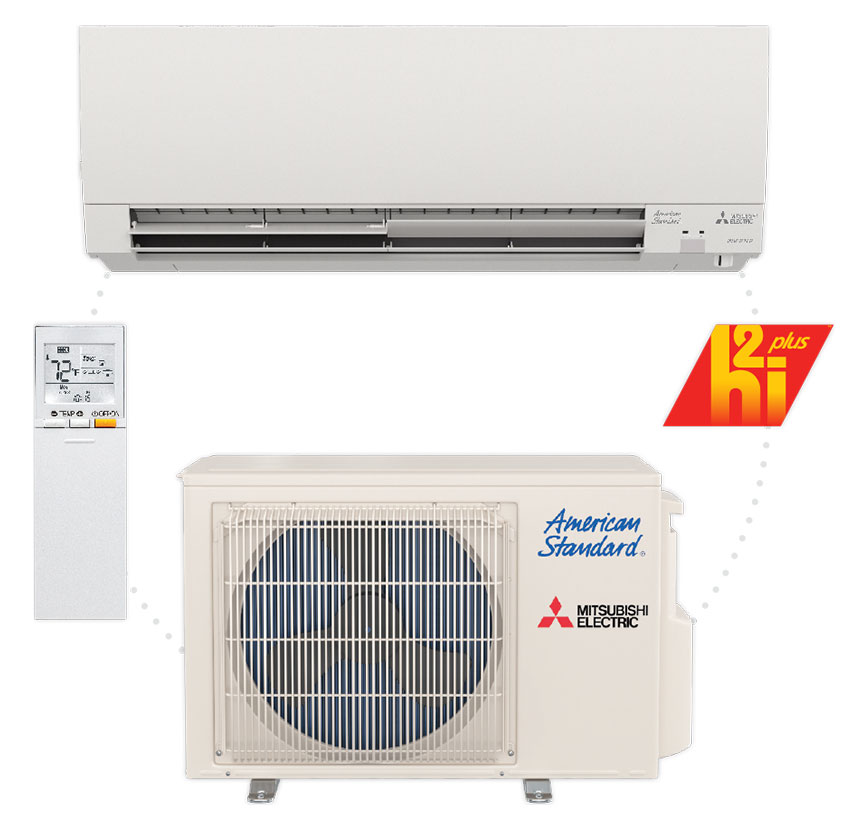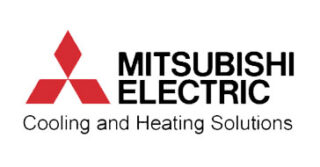Whereas traditional heat pumps and central air conditioning systems force cooled and heated air through ducts, mini-split heat pumps deliver air directly into different zones. Mini-split heating and cooling systems are comprised of a small outdoor unit and one or more indoor units that require nothing more than mounting capabilities and access to electricity.
Ductless mini-split systems offer home and business owners a cost-effective way to replace inefficient window air conditioning units, space heaters and electric baseboard heaters. They can be installed in home additions, new construction, condominiums and apartments, or to improve temperature control in specific rooms. Ductless mini-split systems can even be fit for buildings that currently use ducted forced-air systems.

When it comes to keeping our homes comfortable, air conditioning and heating systems play a pivotal role. In the past, many homeowners relied on window air conditioning units to battle the scorching heat of summer or the bitter cold of winter. While window units served their purpose, they were often inefficient and noisy, leading to discomfort and increased energy bills. Fortunately, modern technology offers a better solution: mini split systems. These innovative HVAC systems have become increasingly popular for a multitude of reasons, including their energy efficiency, cost-saving benefits, superior indoor air quality, ease of installation, and reduced carbon footprint.
Energy Efficiency:
One of the primary advantages of these units is their remarkable energy efficiency. Unlike traditional window air conditioning units, mini-split systems are designed to operate on significantly less power. This efficiency is achieved through the use of inverter technology, which allows the system to adjust its speed and output according to the specific cooling or heating requirements of a room. As a result, homeowners can enjoy a comfortable living environment without the worry of skyrocketing utility bills.
Cost Savings:
These systems are not only more energy-efficient but also cost-effective in the long run. While the initial installation cost may be higher than that of a window unit, the energy savings over time more than make up for it. These systems offer homeowners a substantial return on investment as they consume less power and provide zoned heating and cooling. This means you can avoid wasting energy by cooling or heating rooms that are not in use, ultimately reducing your utility expenses.
Indoor Air Quality:
Mini-split systems go beyond mere temperature control; they also enhance the quality of indoor air. These systems are equipped with washable filters that help trap dust, allergens, and other particulate matter, ensuring that the air you breathe is clean and healthy. Improved indoor air quality can lead to better respiratory health, reduced allergies, and an overall sense of well-being for your family.
Easy Installation:
Installing these systems is a breeze compared to the complex and invasive ductwork required for traditional central HVAC systems. Mini-splits consist of an indoor unit, typically mounted on the wall, and an outdoor condenser unit. The two are connected by a small conduit, requiring only a small hole in the wall. This simple installation process means less disruption to your home, reducing the time and cost associated with HVAC installation.
Reduced Carbon Footprint:
In an age where environmental consciousness is paramount, mini-split systems offer an environmentally friendly solution. Their energy efficiency and zoning capabilities contribute to a lower carbon footprint. By avoiding over-conditioning of unoccupied rooms and using less electricity, you can help reduce your impact on the environment while enjoying comfortable indoor temperatures.
Zoned Comfort:
Perhaps one of the most appealing features of mini-split systems is their ability to cool and heat specific zones of your home to the exact temperature you desire. This level of control is unmatched by traditional systems, which often struggle to maintain consistent temperatures throughout the house. Mini-splits allow you to customize your indoor climate, providing consistent and exceptional year-round comfort.
Mini Split Systems by Mitsubishi have revolutionized home heating and cooling by offering numerous advantages over inefficient window air conditioning units. These systems are energy-efficient, cost-effective, improve indoor air quality, are easy to install, and help reduce your carbon footprint. Additionally, they provide homeowners with the flexibility to create individual comfort zones throughout their homes. If you’re looking to upgrade your HVAC system and enhance your home’s comfort and efficiency, a mini-split system is a smart choice that will pay dividends in the long run.

A mini-split system, also known as a ductless mini-split or ductless heat pump, is a heating and cooling system consisting of an outdoor compressor/condenser unit and one or more indoor air-handling units. Unlike traditional HVAC systems, mini-splits do not require ductwork for air distribution. Instead, refrigerant lines connect the outdoor and indoor units, allowing for efficient heating and cooling of individual rooms or zones.
Mini-split systems offer several advantages, including energy efficiency, precise temperature control, flexibility in zoning, and ease of installation. Because they don't rely on ductwork, mini-splits can be installed in homes or buildings where ducted systems are impractical or too costly. They also allow for independent temperature control in different areas, potentially reducing energy consumption and utility costs.
Yes, mini-split systems are designed to provide both heating and cooling capabilities. They operate similarly to traditional heat pumps, using refrigerant to transfer heat between indoor and outdoor units. During the warmer months, the system extracts heat from inside the building and releases it outdoors to provide cooling. In colder months, the process is reversed, extracting heat from outdoor air (even in cold temperatures) and transferring it indoors for heating.
The number of indoor units that can be connected to a single outdoor unit depends on the system's capacity and configuration. Most mini-split systems support multiple indoor units, typically ranging from two to eight or more, allowing for customized zoning and temperature control in different areas of a home or building. It's essential to consult with an HVAC professional to determine the appropriate system size and configuration for your specific needs.
Mini-split systems require minimal maintenance compared to traditional HVAC systems with ductwork. Regular tasks include cleaning or replacing air filters in the indoor units, ensuring that outdoor units are free of debris and vegetation, and scheduling annual professional inspections and tune-ups. Additionally, keeping the indoor units free of dust and obstructions can help maintain optimal performance and indoor air quality.